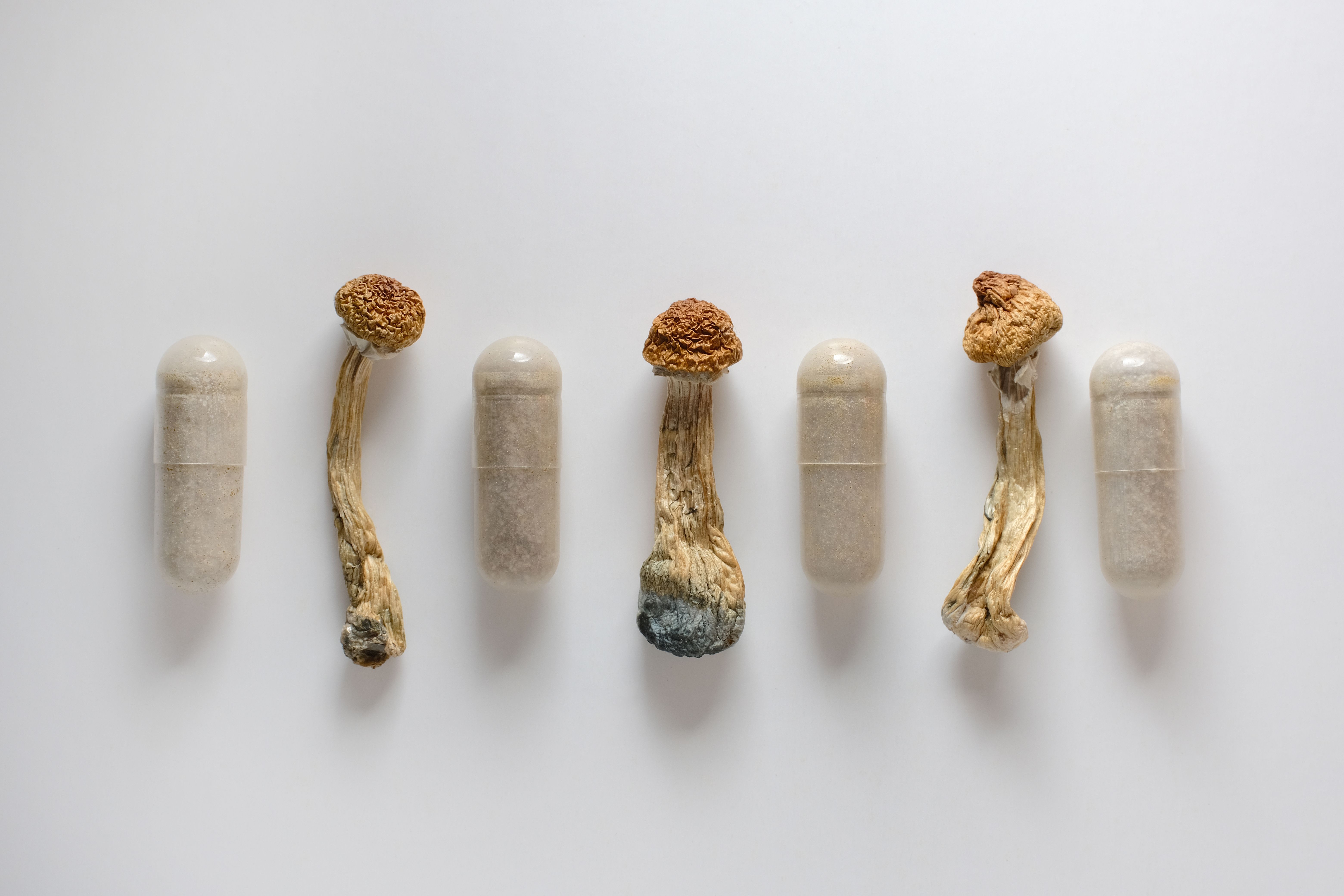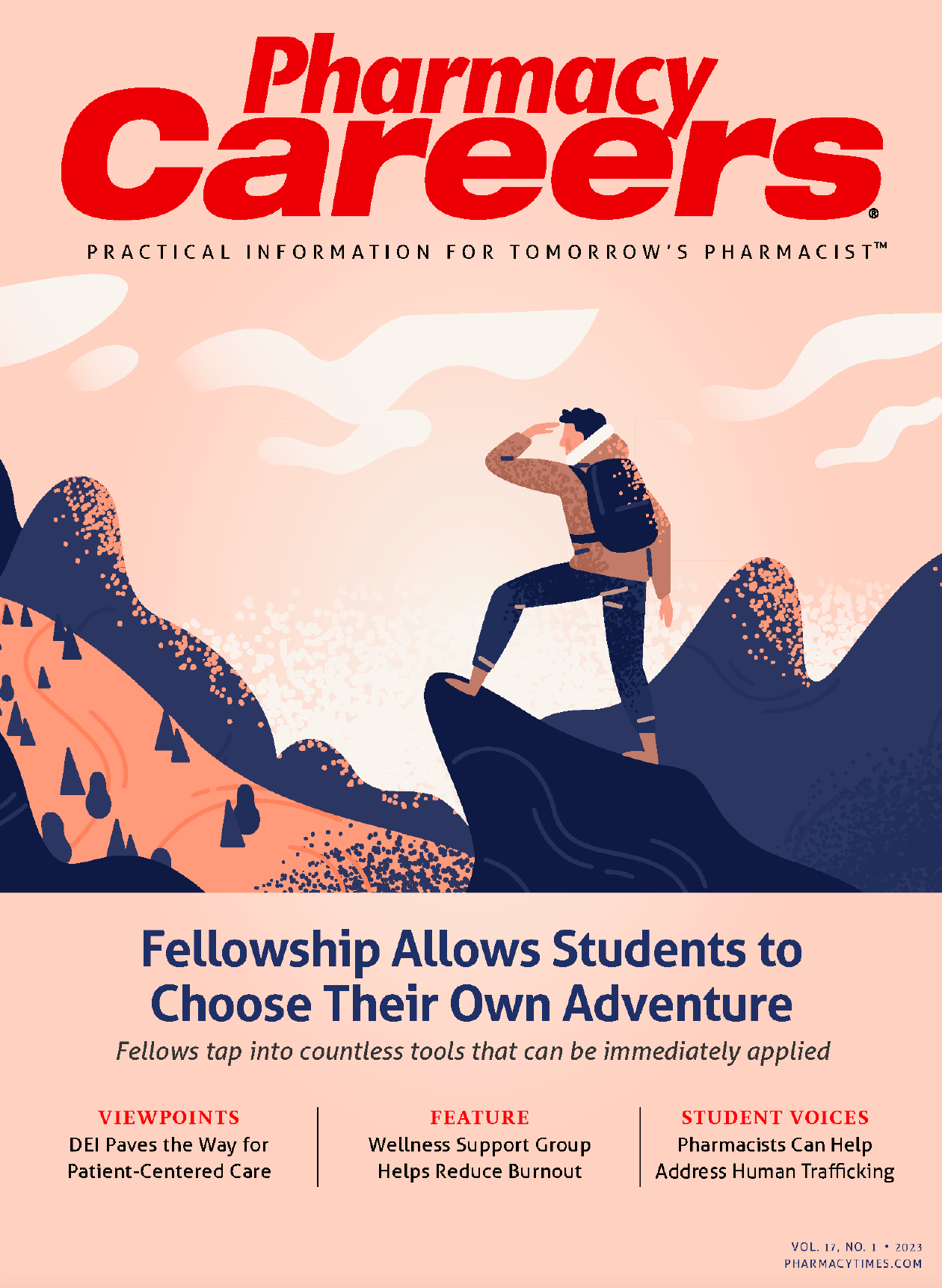Publication
Article
Pharmacy Careers
Understanding Pharmacokinetics, Pharmacodynamics of Psychedelic Medicines
Pharmacists must be involved in managing adverse effects and drug-drug interactions as psychedelic medicines collide with traditional psychiatric treatments.
With the growing body of research into psychedelic medicines such as psilocybin and methylenedioxymethamphetamine (MDMA), pharmacists are sure to become crucial in the management and handling of these novel treatments. One important role for pharmacists in this space will be managing adverse effects (AEs) and potential drug-drug interactions. In an interview with Pharmacy Times, expert Kelan Thomas, PharmD, MS, discussed what pharmacists should know about this rapidly changing space.
Dry psilocybin mushrooms | Image credit: Cannabis_Pic - stock.adobe.com

Q: Why is the topic of psychedelic AEs and drug-drug interactions an area of importance in this fast-developing field?
Kelan Thomas, PharmD, MS: As drugs [such as] MDMA and psilocybin are going through the FDA approval process and the emergence of ketamine [is] in sight for psychiatric indications, it’s becoming more critical to think about how these are going to integrate with our existing psychiatric medications, in particular. How can we mitigate any risks? Are there potential efficacy changes based on which psychiatric medications would be used before or with the psychedelic? So [we’re] answering these questions about how these new treatment therapies are in this new treatment paradigm and how they are going to integrate with our existing psychiatric and mental health care systems.
Q: What are some key points in the current scientific literature regarding the pharmacodynamics and pharmacokinetics of psilocybin, MDMA, and ketamine?
Kelan Thomas, PharmD, MS: With respect to those medications, MDMA tends to have the most possible AEs and drug interactions. This comes from the AEs [related to] its amphetaminelike effects and more substantial increases in heart rate and blood pressure, depending on what the dose is and how it’s used. If you increase the drug exposure, there may be some changes there. It also has a lot of potential drug-drug interactions because it’s essentially metabolized by many different cytochrome P450 (CYP) enzymes. It’s also an autoinhibitor of CYP2D6, which is a very common enzyme for drug interactions. So not only could other drugs increase or decrease the levels of MDMA, but MDMA could also increase or decrease the levels of other drugs that [patients] are taking.
Q: What is currently known about the safety profiles of psilocybin, MDMA, and ketamine?
Kelan Thomas, PharmD, MS: Of those, psilocybin is probably one of the safest. It doesn’t tend to have as much blood pressure and heart rate increase as the other . With…the Spravato [Janssen] version of esketamine, its main contraindication is to not give it to [patients] who have arteriovenous malformation; that’s a contraindication for [patients who] have underlying risks of cardiovascular disease or stroke risk. Blood pressure is something to consider and monitor as [patients] are taking these, and that risk needs to be evaluated. But with psilocybin, [individuals] have taken hundreds of times the psychedelic dose, and there doesn’t seem to be much of a risk there. It also doesn’t seem to have much risk with drug interactions. It’s mostly metabolized by the UDPglucuronosyltransferase enzymes or glucuronidation enzymes that don’t have the same level of drug-drug interaction risk [as MDMA and ketamine].
Q: What are some key points to consider regarding coadministration of psychedelics with psychiatric medications?
Kelan Thomas, PharmD, MS: [Although] MDMA has these theoretical risks, when [investigators] looked at studies of healthy volunteers who were taking MDMA and [who were] previously given [selective serotonin reuptake inhibitors (SSRIs)] or [serotonin and norepinephrine reuptake inhibitors], it attenuated the blood pressure effects. [To me, this] demonstrates there’s a pharmacodynamic interaction at play whereby the SSRIs are preventing some of the uptake of MDMA into the presynapse. It’s not having as big of an effect on heart rate and blood pressure in coadministration. So from a safety standpoint, it doesn’t seem to be a huge safety risk if they were coadministered.
The bigger issue—and this was a theme that was coming up at these conferences—is whether we are going to lose the benefits, the efficacy of it. In the analysis of the MDMA phase data, there was a paper that showed [that patients] who recently had to taper and discontinue their antidepressant before they were in the trial didn’t respond as well and didn’t have as great of a PTSD [posttraumatic stress disorder] symptom reduction as [patients] who had not been taking any antidepressants at all. So, that’s something. There [are] some really early unpublished preliminary data I heard about from the Sana Symposium, and one of the presenters mentioned that the Imperial College of London is starting to evaluate [them] in their [clinical trial of] escitalopram with psilocybin. They’re also finding this similar signal among [those] who [have] recently tapered off [their antidepressants], which suggests there’s some sort of homeostasis. We know antidepressants take several months to have their benefit, usually a 1- to 2-month timeline to see that full benefit unfold, so there is some neuroadaptation happening at the receptor level. And so, it may take several months of being off an antidepressant to see MDMA or psilocybin have its benefit for things [such as] depression and PTSD. That’s an emerging area of research that we have to understand very well to help predict who’s going to respond or how long we need to stop their antidepressants before they can take this psychedelic-assisted therapy.
Q: [Are] there any data so far regarding the impact of antidepressants on efficacy in relation to psilocybin, ketamine, or others?
Kelan Thomas, PharmD, MS: Ketamine basically was approved as an augmentation strategy, so [it] is routinely given with antidepressants, even in all the esketamine phase trials for FDA approval. In terms of [patients] having some benefit from existing treatments, ketamine is the most resistant to any issues, whether that’s changing efficacy [or something else]. [Ketamine and antidepressants] were constantly coadministered, but the MDMA and psilocybin may not be as beneficial if they’re coadministered with current antidepressant therapy.
Q: How might serotonin syndrome be an area of concern with psychedelic medicine treatment?
Kelan Thomas, PharmD, MS: In my recently published psychopharmacology review on this topic, we thought about the different types of mechanisms of action. Psilocybin, being a psychedelic partial agonist of the serotonin A receptor, seems to have the lowest risk of any type of serotonin syndrome. Even the idea that older drugs, [such as] lysergic acid diethylamide, could cause serotonin syndrome—when you look at these case reports, it’s very shaky evidence. It reminds me of the debate and controversy over the FDA labeling for the idea of triptan migraine drugs and using those with SSRIs. There was a broad FDA warning put out, but it’s come under a lot of scrutiny by headache societies and [individuals]. Now that we have decades of clinical experience, [that] doesn’t seem to be the case. Triptans and SSRIs don’t have any clear pattern of greater serotonin syndrome risk, so a lot of people have called for the change and removal of that FDA warning with triptans. I think it is similar.
MDMA, on the other hand—almost because of its norepinephrine and dopamine effects—can have more increases in blood pressure, etc. Ketamine shouldn’t have any serotonin toxicity at all, given its NMDA glutamate mechanism of action. But what’s happening outside the context of medical or FDA approval trials is that more and more [individuals] are using ayahuasca. And so ayahuasca…because [it has] monoamine oxidase inhibitors in [it] is one of the more dangerous combinations. As we know, there are lots of contraindications with mixing monoamine oxidase inhibitors with FDA-approved antidepressants. If [patients] are mixing these things, especially in these retreat centers where they may not have much medical oversight, that’s where I’m really concerned about the risk of serotonin toxicity.
Q: What are some best clinical practices for psychedelic-assisted therapy in terms of assessing pharmacological profile?
Kelan Thomas, PharmD, MS: It’s interesting because the way the studies are done, most [patients] are stopped on their other psychiatric medications, for example, because we have to understand the effects of the specific drug and the trial. This is an interesting role for pharmacists to really become the specialist in these best clinical practices and [think] about tapering off antidepressants. A lot of these clinicians [who] are thinking about how we’re going to do this, they’re thinking [that] we are probably going to have to taper in advance and [determining] how [to] best navigate that. Pharmacists are uniquely positioned to be the experts in thinking about the best tapering strategy based on what antidepressant someone’s currently taking, the half-life of the drug, [and] the pharmacokinetics of the drug. So these clinical practices will start to develop and emerge.
And then [we should think] about possible risk of drug-drug interactions, what the hypothetical or AEs demonstrated in trials [are], what might happen with other medications that are not for psychiatric use, and how [we’re going to] navigate all that. There’s a lot to be learned, in terms of the best clinical practices [and] what those screening procedures will be, to decide who can get psychedelic-assisted therapy. Pharmacists can be a big part of that process of helping to navigate that, because it is a lot [to think] about drug interaction risk and tapering strategies for antidepressants.
Q: Do you have any closing thoughts?
Kelan Thomas, PharmD, MS: It seems by the end of 2023, MDMA is very likely to become FDA approved for PTSD, and psilocybin will likely get approved for depression the following year. I would encourage pharmacists to start reading the literature, start looking at these articles, and evaluating, because these things are coming soon. And they are quite different than the way we’ve thought about other new therapeutics on the market. It’s important for pharmacists to start thinking about what their role could be to facilitate this transition into a new paradigm of psychiatric treatment.

Newsletter
Stay informed on drug updates, treatment guidelines, and pharmacy practice trends—subscribe to Pharmacy Times for weekly clinical insights.






